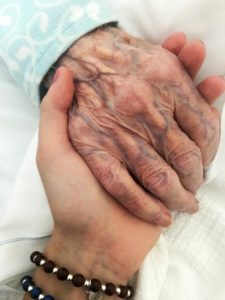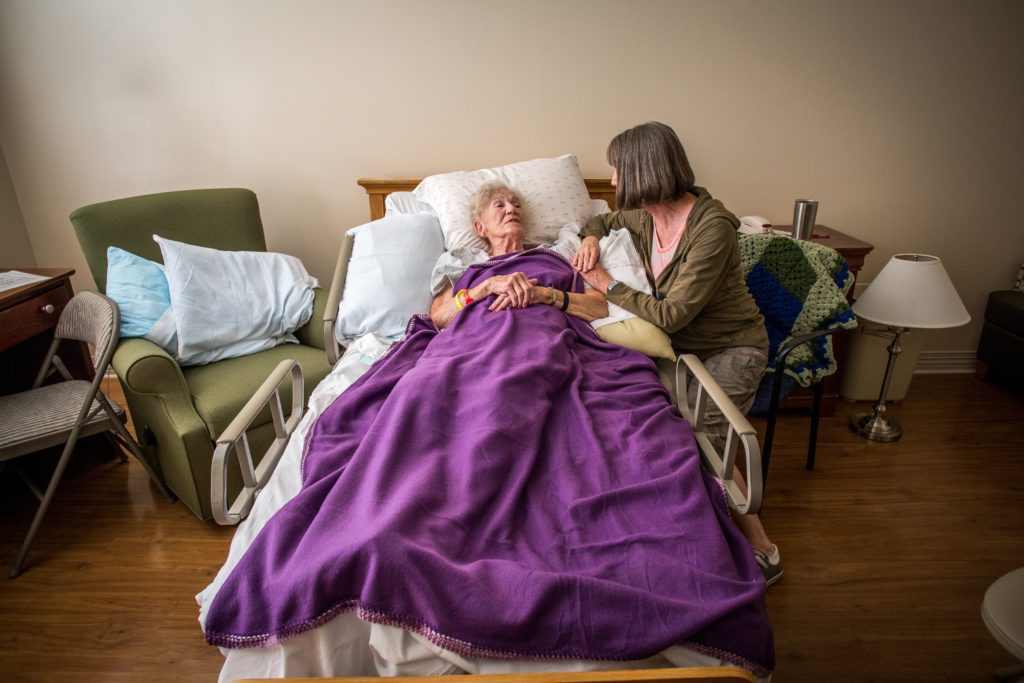“Even when your hair is gray, I will carry you,” the prophet Isaiah tells us — no small comfort to the ever-growing slice of America that is in or nearing their silver years. With birthrates declining and life expectancy rising, our nation is the oldest it’s ever been. But are we ready for the challenges that are bound to come?
Many Catholics — and indeed, Christians of various stripes — pray that the “life of every human person, from conception to natural death, might be enshrined and protected in our laws.” Decades and dollars have sustained the advocacy around protecting the unborn child, a mission even more critical in these tumultuous years after the Dobbs decision. Yet save for a few high-profile cases — Terri Schiavo in the mid-2000s, or headlines about abuses in Canada’s euthanasia program — there has been less concerted effort around building up respect for the elderly facing their final years.
That will need to change.
The Baby Boomer generation — those born between 1946 and 1964 who for so long have directed the course of American culture and society — are now in their 60s and 70s. The way they face the end of life, and the choices we opt to prioritize or make available, will set the script for how we treat death, the labor of caretaking, and the value of human dignity into the future.
Advances in medicine and personal health means that Americans are living longer. This is a good thing. But as more and more seniors reach the age of needing a little assistance to handle the responsibilities of daily living, our nation could run into a problem of simple math: more seniors needing care than there are bodies to care for them.
To put this into context, at the turn of the millennium, those in the 60s and 70s made up 12.9% of the U.S. population. Today, they represent nearly one-fifth (19.4%) of all Americans, and declining birthrates means this shift will continue. The future of aging in America — with fewer younger workers providing for a growing number of seniors — will put increasing strain on our care infrastructure, and the programs and resources available to those needing to care for a loved one as they slow down.
Many seniors live healthy and active lives through much of their retirement years. But Father Time remains unbeaten. Eventually, our bodies and minds start to break down as we age — and with more seniors living longer, the need to compensate for those frailties becomes more acute. The blessing of having Grandma or Papa for more years is accompanied by an obligation to care for them in their less-active, less-agile years. While old age itself is not an illness, visiting an elderly relative — even just to spend time with them — can be considered a corporal work of mercy.

(CNS/courtesy Michaela Gallagher)
And an aging society will provide plenty of opportunities to engage in that kind of charity. The federal Administration on Aging estimates that 70% of adults 65 and over will need some kind of long-term care assistance, services, or support in their remaining years. This isn’t intensive medical treatment; just a helping hand with daily activities like preparing food, bathing, or using the bathroom. On average, seniors need this type of care for about three years, though for some the need can stretch out much longer.
For many, family is the first and primary caretaker. Many seniors know they can rely on one or more of their children to attend to some of their more basic needs. But those needs often require more constant time and attention than adults with their own children to care for can devote. A report from the Pew Research Center found that more than half of adults in their 40s are members of the so-called “Sandwich Generation” — those who have an elderly parent while also raising at least one child at home.
And for other seniors, family isn’t a viable option. Broken relationships, alienated children, divorce; all can mean a fracturing of the safety net that family is meant to provide. And with more Americans opting out of parenthood altogether, an increasing share of adults will enter their senior years with thinner family trees, and fewer people to visit them in retirement, an assisted-living facility, or hospice care.
These trends will put increasing pressure on a social system that has not adjusted to the new realities of smaller families and longer lives. Caring for the elderly is inherently labor-intensive — it’s a one-to-one service that often requires some level of trust, even intimacy. Like child care, it’s a job that can’t become more “efficient” or “productive” without losing quality. A recent research paper found that when private equity firms took over a nursing facility, profits went up and patient outcomes — including mortality — took a turn for the worse.
In Japan, they are seeking to supplement their senior care with robots trained to change bedpans, remotely monitor vital signs, and — more speculatively — engage in conversation to provide a simulacrum of social engagement. According to the MIT Technology Review, the Japanese government has spent more than $300 million on research and development for these new devices, though they remain niche, rather than mainstream, devices so far.
One does not need to be a smartphone-avoiding Luddite to be skeptical of the idea of innovating our way out of the increasing demand for elder care. Technology could be used in some cases — like monitoring a senior’s apartment for falls — but can never be expected, or desired, to replace the human connection of a relationship with a caregiver. If anything, these advances mean our seniors need more in-person relationships and interactions, not fewer.
Medicaid, for example, won’t pay for personal care for seniors. So for many Americans, the primary vehicle for most Americans to access care in their senior years is through long-term care insurance. Yet the market for such services has real problems; the number of options available to individuals fell from 125 two decades ago to under 15 more recently, according to the American Action Forum. Washington state recently rolled out a new state tax aimed at providing long-term care to residents, but it has been plagued with difficulties and it is unclear whether it will collect enough revenue to solve the looming problem.

The looming crisis of senior care will likely require touching some political third rails. Allowing Medicaid to pay for long-term care, for example, will dramatically increase its expenditures and worsen our nation’s fiscal picture, especially if we seek to raise wages for home health aides. As the whole economy has recently experienced, a world with declining birth rates means fewer workers and increased labor shortages — especially in labor-intensive jobs like child and elder care. It may be the case that the need for home health care aides and nursing home staff spurs America to revisit its immigration policy before too long. And any step toward broader public funding will almost certainly require higher taxes.
Solving these problems may sound like drudgery. Yet if we don’t tackle the financial side that makes aging a difficult problem to solve with compassion, less salutary “solutions” may present themselves. While none of the activists who push for access to physician-assisted suicide like to focus on the financial benefits, governments facing entitlement spending challenges may see a certain allure in being able to terminate an elderly citizen’s claims on medical spending under the false flag of “compassion.”
Even if an assisted suicide program could be implemented with perfect safeguards against abuse — an outlandish hypothetical, as examples from Canada and the Netherlands illustrate — it would quickly establish a social expectation that the elderly should choose the path of euthanasia rather than “be a burden” to their loved ones or society at large.
The work of accompanying the elderly through their years of decreasing mobility, increasing dependence, and their final journey home is an opportunity to teach us all about the fragility and interconnectedness of human life. Those lessons can’t be learned if we seek to automate them away through “care robots” or render them illegible via euthanasia.
We can’t expect families to take care of aging relatives on their own; and many of our elderly community members don’t have family available to care for them. There are no easy answers. A world in which an increasingly large share of our population requires some long-term assistance requires us to evaluate tradeoffs and commitments.
But just as in our fight to protect the unborn, protecting the elderly in their frailty and old age means that any policy solution — and the cultural change of mentality that must accompany it — has to remember the importance of human relationships before anything else.
No social safety net program or pregnancy resource center alone is enough to help the mom contemplating abortion — we need a web of support and a cultural recognition of the value of that growing fetus. Similarly, our politics needs a greater recognition of the challenges our aging population lays ahead of us, and a commitment to treating our elders with respect.
Even if this means uncomfortable political choices in the short run, such as increasing immigration or raising taxes, the alternatives are “solutions” that threaten to make us all a little less human.

